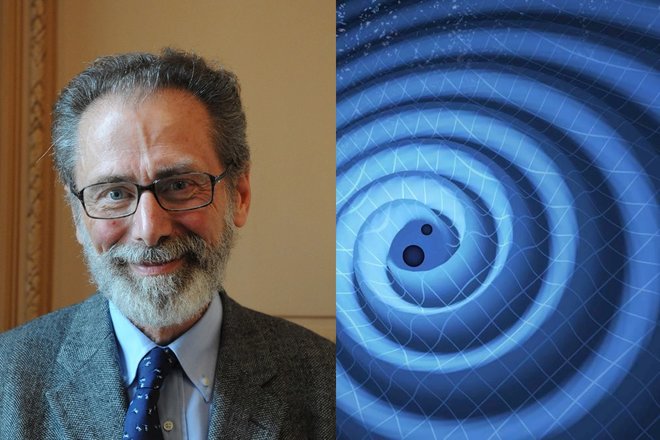Abelian prize received by French mathematician Yves Meyer for the theory of wavelets

As is known, the Nobel Prize is not awarded to scientists-mathematicians. They have their own award, which was founded by the Government of Norway in 2002. This prize is awarded every year, its size is about $ 710 thousand. The winner of the award each year is determined by an international committee of five well-known mathematicians, who, in turn, are appointed by the International Mathematical Union and the European Mathematical Society .
This year, 77-year-old French mathematician Yves Meyer (77) was considered worthy of the award. His merit is a significant contribution to the development of the theory of wavelets, mathematical functions, which are used, in particular, in the field of data analysis and compression. The Abelian Committee published a statement saying that the methods developed by the scientist had a long-term impact on two areas of mathematics: harmonic analysis and differential equations.
Meyer is a famous scientist . Previously, he was engaged in number theory, in this area he also left a significant contribution. His curiosity and desire to conduct active scientific activities led to the fact that he took up the harmonic analysis . Here, in turn, he began to develop a theory of analyzing complex signals, which is important for information technology. Then he again took up the fundamental problems of mathematics.
')
How it all began
During his life, Meyer repeatedly changed the direction of his work. He was born in July 1939, grew up in Tunisia. Here, the future scientist saw people of many nationalities whom he wanted to bring together from childhood, removing barriers between various ethnic groups. After school, he entered the Higher Normal School . This is a French state institution in the field of higher education in France, in Paris. According to the scientist, only those who do not need power and money come to this institution, the vocation of the majority of students here is the receiving and transfer of knowledge.
Having finished studying, Meyer made the choice to become a “pure” researcher or to teach. He preferred the latter, since the young specialist was more interested in “giving away knowledge than owning it”. First, he was appointed assistant teacher, and then Meyer himself became a teacher, receiving the post of professor of mathematics at the University of Paris-South XI . In 1995, he began working at ENS Cachan, where he remained until his retirement in 2008.
His work was related to the analysis of complex, changing mathematical functions. They can be described by partial differential equations. For example, fluid flow is described by a series of equations, which are called the Navier-Stokes equations . This is a system of partial differential equations that are considered among the most important in hydrodynamics. Equations of this type are used in mathematical modeling of a variety of natural phenomena and technical problems. In the 90s, Meyer helped to find particular solutions of equations, and this is one of the most important tasks in mathematics.
In the 60s, the mathematician became one of the authors of the theory, which served as the basis for describing the structure and behavior of quasicrystals, substances with long-range order, but not possessing translational symmetry, like ordinary crystals. Their existence was predicted in 1974, and the quasicrystals themselves were discovered in metal alloys in 1982. By the way, the scientist who discovered quasicrystals for the first time received the Nobel Prize in 2011. In 2010, Meyer together with Basarab Matei created a mathematical description of the structure of these substances.
In the 1970s, Meyer was involved in harmonic analysis. This is a section of mathematical analysis in which the properties of functions are studied using their representation in the form of Fourier series or integrals.

Wavelets
In the end, the work of the scientist led him to create a theory of wavelets. Wavelet is a mathematical function that allows analyzing the frequency components of the data. The graph of this function looks like wave-like oscillations with an amplitude that decreases to zero far from the origin. In practice, using wavelets, one can achieve strong compression of images and video, while maintaining acceptable quality. The work of the scientist on wavelets began in 1984 with a conversation with colleagues about a copier at the Polytechnic School of France . Meyer got acquainted with several publications on this topic and realized that he wanted to do wavelets like nothing else.
Meyer’s work benefited science, and not only its theoretical foundation. The bottom line is also there. For example, the results obtained by the scientist became part of the successful implementation of the Herschel telescope mission, observing distant regions of the Universe and the Hubble telescope. Meyer is also working on gravitational wave detection algorithms. In 2001, the future Abel Prize winner proposed a mathematical theory, the implementation of which allowed us to divide any image into “animation” and “texture”. This separation algorithm is used by law enforcement agencies to detect and highlight fingerprints on a complex surface.
In general, the contribution of the French scientist is very large. The Abel Prize website states that the prize was awarded to a person who has long been a leader in the development of the theory of wavelets, which is located at the intersection of mathematics and information technology. He managed to create a theory of analyzing complex signals, which is crucial for IT.
Abel Prize Meyer will receive from the hands of the King of Norway Harald V at the awards ceremony, which will be held on May 23.
Source: https://habr.com/ru/post/370289/
All Articles